
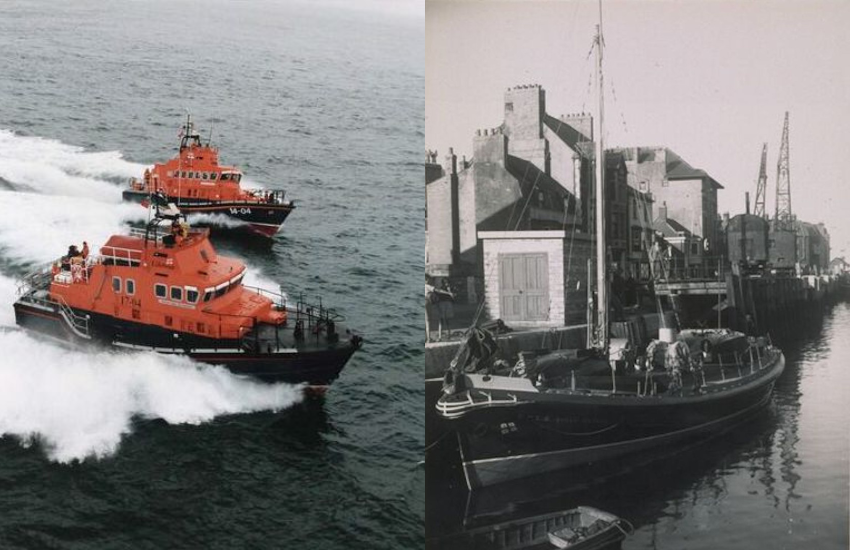

As it turns 200, the RNLI has revealed its volunteer lifeboat crews in Guernsey and Alderney have saved 951 lives.
Since the charity was founded in 1824, its volunteer crews in Guernsey, Jersey and Alderney have launched 5,153 times saving 1,561 lives across the Channel Islands, while its lifeguards, since they were established in Jersey in 2011, have aided 4,042 people and saved a further 18 lives.
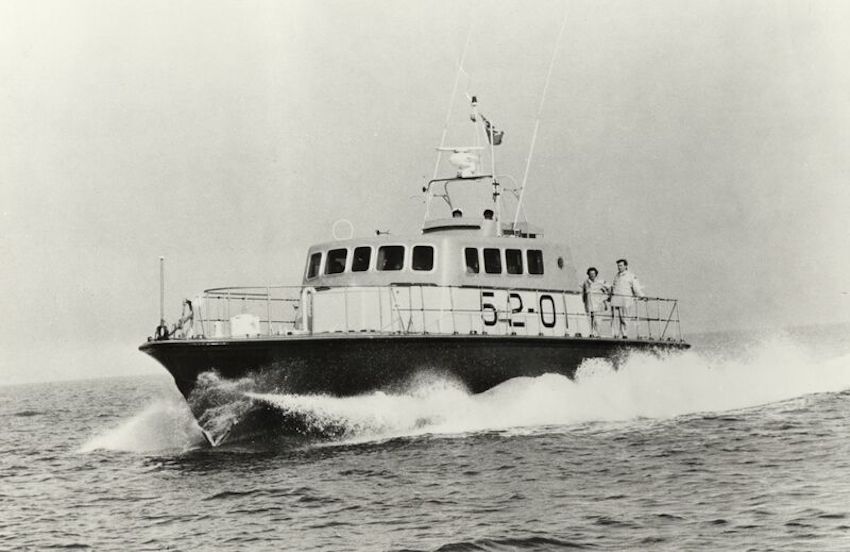
Pictured: Prototype Arun 52-01, which was stationed at St Peter Port from 1972-73 and Barry Dock from 1974 to 1997. Credit: RNLI.
Guernsey's station is one of the oldest in the south west, established in 1803, before joining the Institution in 1861.
It has been credited with saving 612 lives since 1824, including during what has been described as one of the most incredible rescue missions in RNLI history when the cargo ship the Bonita was caught in a hurricane.
25 Medals of the Institution have been awarded in Guernsey for gallantry in saving life from shipwreck – two Gold, eight Silver, and 15 Bronze.
RNLI Chief Executive, Mark Dowie, said: "For a charity to have survived 200 years based on the time and commitment of volunteers, and the sheer generosity of the public donating to fund it, is truly remarkable.
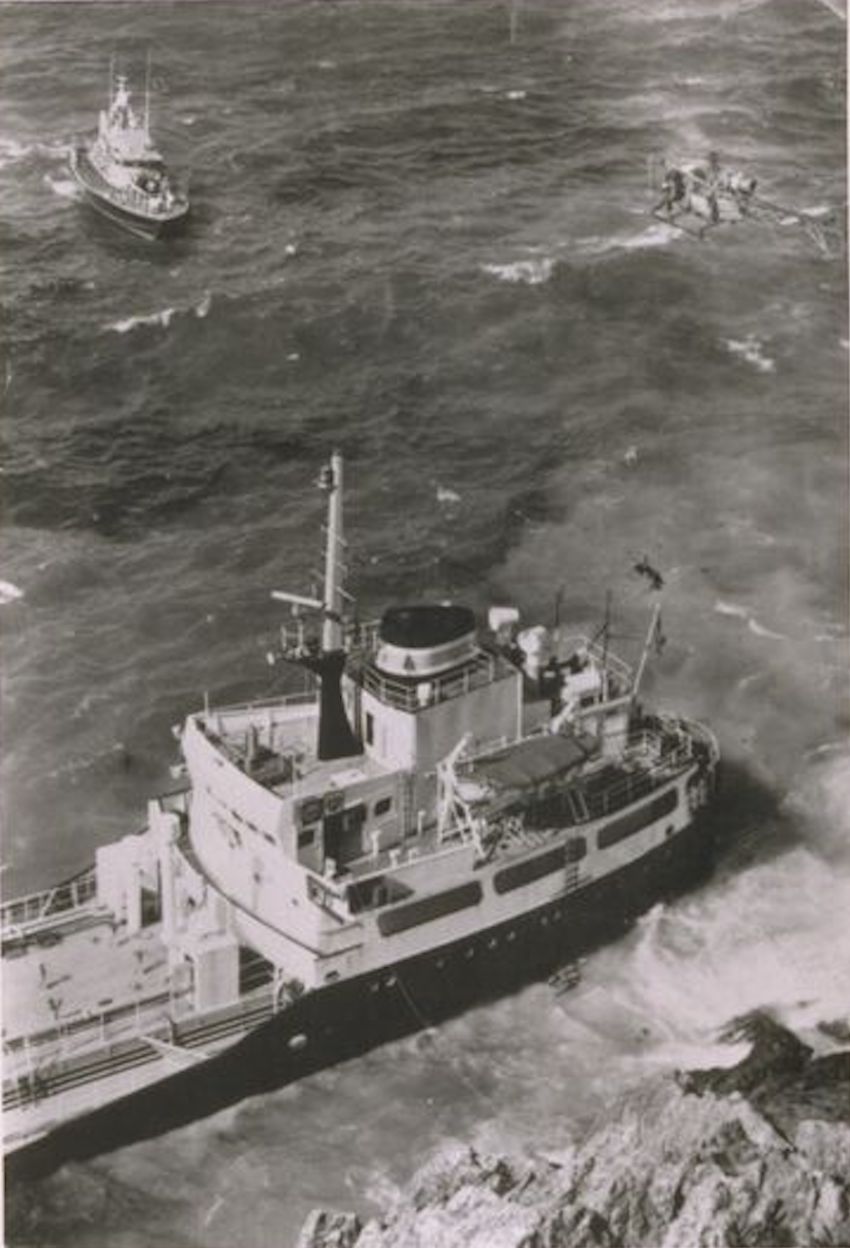
Pictured: St Peter Port lifeboat Sir William Arnold and a French helicopter at tanker Point Law, which was wrecked off Alderney, on 15 July 1975. The oil tanker was empty having offloaded fuel in St Sampson with 12 crew members rescued. Credit: RNLI.
"It is through the courage and dedication of its incredible people that the RNLI has survived the tests of time, including tragic losses, funding challenges, two World Wars and, more recently, a global pandemic.
"Today, we mark the bicentenary of the RNLI. We remember the achievements and commitment of all those who have been part of the RNLI family over the past two centuries; we celebrate the world-class lifesaving service we provide today, based on our 200 years of learning, expertise and innovation, and we hope to inspire future generations of lifesavers and supporters who will take the RNLI into its next century and beyond.
"I am immensely grateful to everyone who is involved with the charity – our volunteers, supporters and staff.
"This is our watch and it is our role to keep our charity safe and secure so it can continue to save lives into the future, as we strive in our vision to save every one."
The first lifeboat station on the island was established at St Sampson's in 1803.
Its boat was one of 31 built by Henry Greathead based on the design of his The Original, the first purpose-built lifeboat which began operation in January 1790.
The Original was 9m long and 3m wide, she could carry 20 people including a crew of 12.
In 1857 The Rescue, a 28ft self-righting vessel was in operation, still from St Samson and the RNLI took over the station in 1861 when a shed was built for £134 on North Side.
Between 1862 and 1875 an unnamed vessel and the Louisa Hall, slightly larger at 30ft, were in service, and then a new lifeboat arrived called the John Lockett.
In 1878 the lifeboat was moved to Les Landes, where a new lifeboat house had been constructed for £334 and the old one sold to the States for £143 10d.
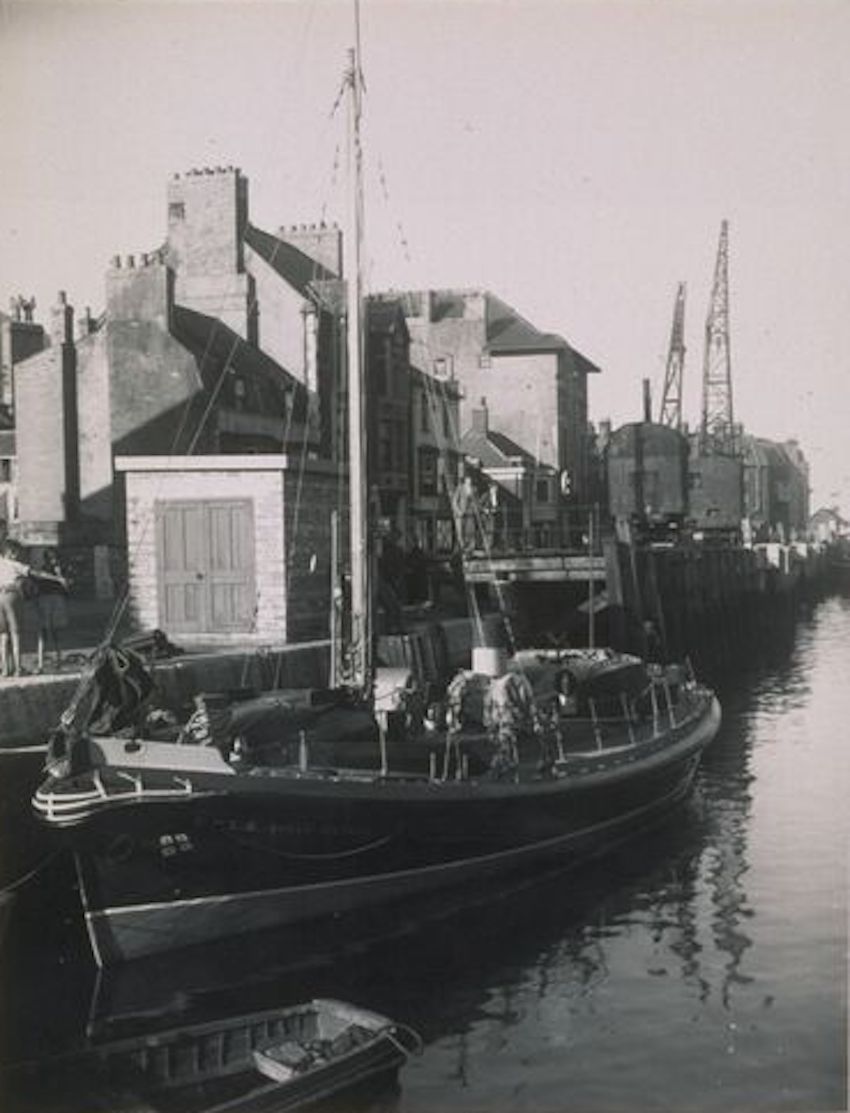
Pictured: The Barnett Class Queen Victoria was stationed at St Peter Port from 1929 to 1940. Credit: Grahame Farr
Only a year later the local committee recommended moving the station to St Peter Port Harbour and the lifeboat returned to her old house at St Sampsons.
In 1881 a new lifeboat house was constructed on the south side of St Peter Port using the materials of the old lifeboat house. It cost £155.
Founded in a London tavern on 4 March 1824 following an appeal from Sir William Hillary, who lived on the Isle of Man and witnessed many shipwrecks, the RNLI has continued saving lives at sea through tragic disasters, funding challenges and two World Wars.
Two centuries have seen vast developments in the lifeboats and kit used by the charity's lifesavers – from the early oar-powered vessels to today's technology-packed boats, which are built in-house; and from the rudimentary cork lifejackets of the 1850s to the full protective kit each crew member is now issued with.
The RNLI's lifesaving reach and remit has also developed over the course of 200 years.
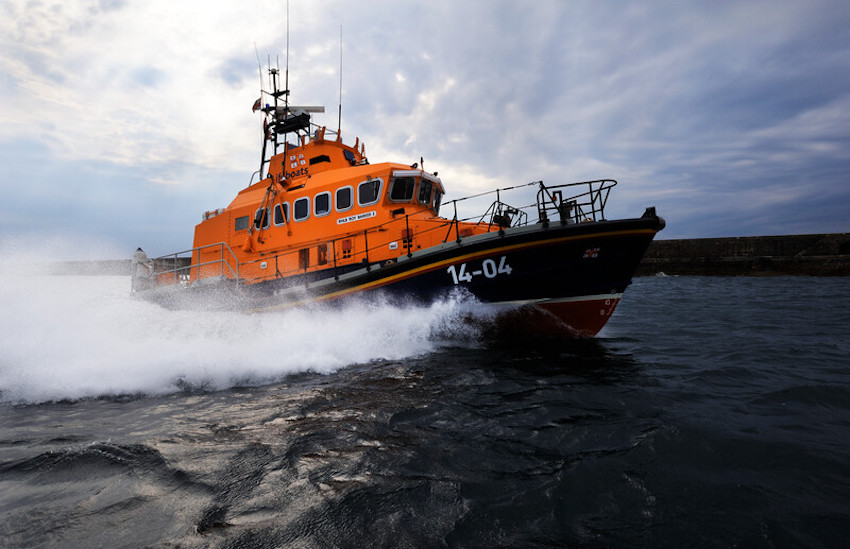
Pictured: Alderney Trent Class Roy Barker 1. Credit RNLI/Nigel Millard
Today, it operates 238 lifeboat stations around the UK and Ireland, including four on the River Thames, and has seasonal lifeguards on over 240 lifeguarded beaches around the UK. It runs domestic and international water safety programmes.
Two things have remained the same – the charity's dependence on volunteers, who give their time and commitment to save others, and the voluntary contributions from the public which have funded the service.
There are four lifeboat stations in the Channel Islands - St Helier, St Catherine, St Peter Port and Alderney - and they operate six lifeboats between them. During the lifeguard season, RNLI lifeguards patrol six beaches on Jersey.
RNLI Heritage Archive and Research Manager, Hayley Whiting, said: "The RNLI's founder, Sir William Hillary, witnessed the treacherous nature of the sea first-hand when living on the Isle of Man and he wanted to take action.
"His first appeal to the nation in 1823 did not have the desired result but, thankfully, he persevered and gained the support of several philanthropic members of society, who put their names to the charity at a meeting in the City of London Tavern on 4 March 1824.
"Twelve resolutions were passed at that meeting, the core of which still stand as part of the RNLI's Charter 200 years later. This shows how the RNLI's values and purpose have remained unwavering for 200 years, despite the social and economic changes and challenges of the past two centuries.
"Hillary's vision was ambitious and forward-thinking, and no doubt he would be extremely proud to see the charity he founded still going strong today, and to see how much it has achieved."
Lifejackets: In 1861, Whitby lifeboat crew launched six times to rescue stricken vessels in a storm, but on their sixth launch a freak wave capsized the lifeboat and all but one of the crew were lost.
The sole survivor was Henry Freeman, who survived because he was wearing a new design of cork lifejacket. After this event, the cork lifejacket became more widely adopted by lifeboat crews.
Fundraising: In 1886, 27 lifeboat crew members from Southport and St Annes lost their lives while trying to rescue the crew of the Mexico. A public appeal was launched, driven by local man Charles Macara. An 1891 appeal raised £10,000 in two weeks.
On 1 October, Charles and his wife Marion organised the first Lifeboat Saturday. Bands, floats and lifeboats paraded through the streets of Manchester, followed by volunteers collecting money. More than £5,000 was taken on the day, which was the first recorded example of a charity street collection.
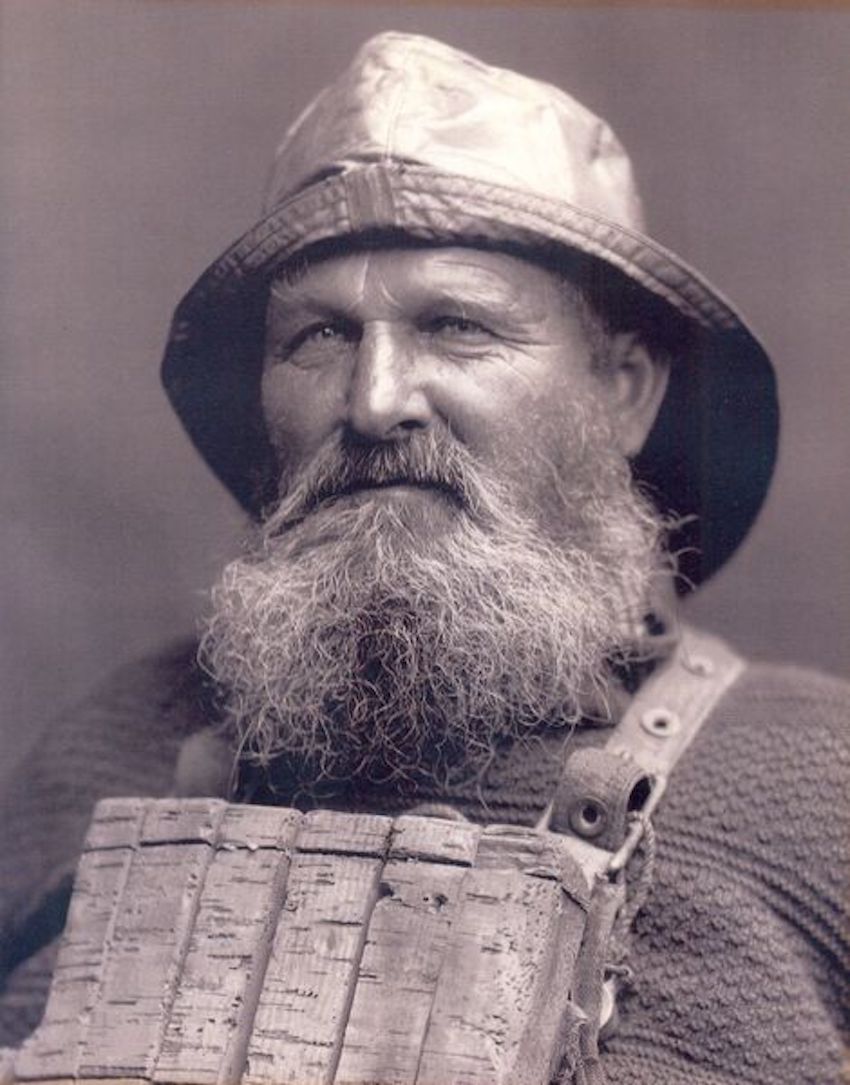
Pictured: Whitby Coxswain Henry Freeman in a cork lifejacket.
Lifeboats: In 1914, over 140 people were saved when the hospital steamship Rohilla was wrecked. The ship had been en route to Dunkirk to help wounded soldiers but was broken up when it ran aground on rocks near Whitby. Five lifeboats battled terrible seas to reach the ship. A motor lifeboat (the first of its kind) from Tynemouth, took the last 50 people on board.
In total, 144 people were saved by the crews, who worked for over 50 hours in atrocious conditions. The motor lifeboat proved its capabilities and became more widely accepted by lifeboat crews after this event.
Wartime: When the First World War broke out, many lifeboat volunteers were called away to fight. The average age of lifeboat crews at home increased to over 50. During 1914-18, RNLI lifeboats launched 1,808 times, saving 5,332 lives. In 1939, young lifeboat volunteers were called away again to war. By the end of the Second World War, RNLI crews had saved 6,376 lives around the coasts of Britain and Ireland.
In 1940, 19 RNLI lifeboats were used to evacuate troops from Dunkirk. Two had RNLI crews onboard, while the others were crewed by the Royal Navy. The lifeboats and their stand-in crews saved thousands of lives while being shelled and bombed for days.
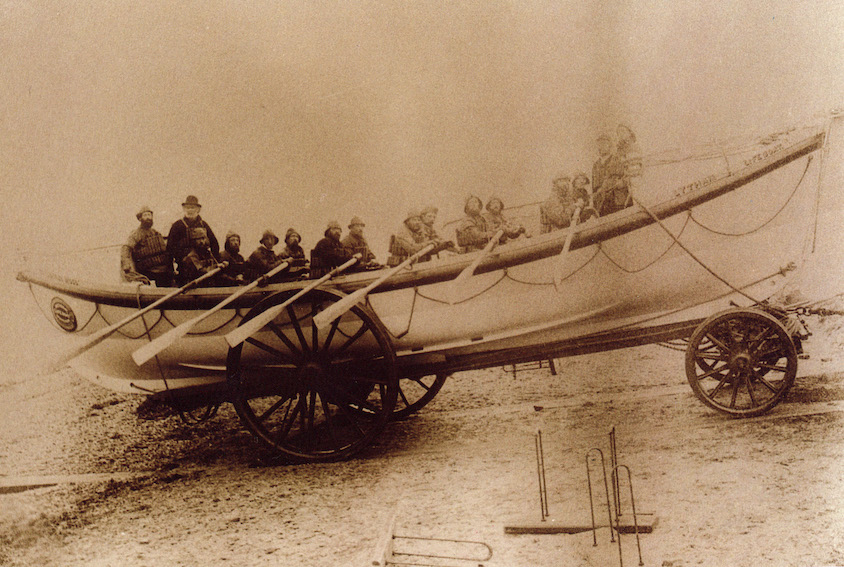
Pictured: Lytham Lifeboat Charles Biggs with the men that went to the wreck of the Mexico. Credit: RNLI.
Throughout its bicentenary year, the charity is running events and activities to remember its history and celebrate the modern lifesaving service it is today, while hoping to inspire generations of future lifesavers and supporters.
A Service of Thanksgiving to mark 200 years of the RNLI will take place at Westminster Abbey on 4 March 2024 at 11.30am. It will be attended by representatives from RNLI lifesaving communities around the UK and Ireland.
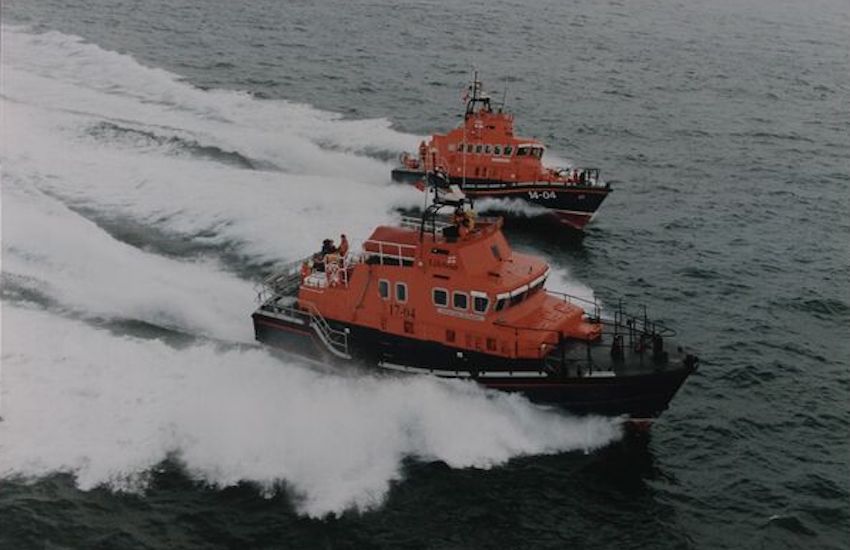
Pictured: Spirit of Guernsey alongside Aldeney's Roy Barker 1. Credit: RNLI.
Alderney: 902 launches, 339 lives saved
St Catherine: 748; 124
St Helier: 1,837; 486
St Peter Port: 1,666; 612
(Statistics from RNLI Operational Data from 4 March 1824 to 31 December 2023 inclusive. A life saved shows how many of the people helped by the RNLI would have lost their life had the RNLI not been there)
On 13 December 1981, crew from the St Peter Port RNLI Lifeboat Station went to the rescue of Bonita; an Ecuadorian cargo ship loaded with fertiliser, sailing from Hamburg to Panama, caught in a hurricane in the English Channel.
The huge waves that were lashing against the Bonita's port side caused her to list heavily to starboard which shifted the ship's cargo. She was soon unable to right herself and the ship's engine lost power.
The Bonita had 36 people aboard: Ecuadorian crew members plus engineers and an electrician from Spain and Norway. The Captain and the First Engineer had also welcomed both their wives and children.
The RNLI's volunteers on the Sir William Arnold lifeboat headed to the cargo ship at 1.23pm after learning the Bonita's Captain had put out a mayday alert.
Michael Scales was the St Peter Port Lifeboat Coxswain at the time, he sadly died in August 2023.
On the 20th anniversary of the rescue, he spoke about the rescue, saying that on the radar you could just see walls of water as they left St Peter Port.
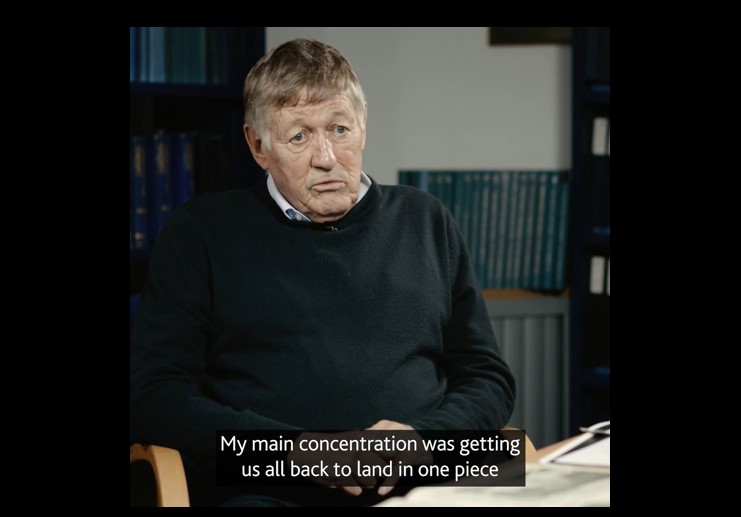
Pictured: Michael Scales speaking in an RNLI documentary to mark the 20th anniversary of the Bonita rescue.
A Royal Navy rescue helicopter had headed to the scene and successfully managed to take four people, including the Captain's wife and toddler, off the Bonita. However, the helicopter's rotor blades started to ice up, forcing the aircraft crew to retreat.
Battling 15m waves in snowy, dark conditions, the lifeboat crew arrived on scene to find the Bonita now listing at 45°. Despite the shrieking winds around them, the lifeboat volunteers managed to usher the Bonita crew towards the stern of the ship.
Aboard the Bonita, shock, panic and exhaustion were beginning to take over. Two crew members, including the Second Engineer, had broken legs. Mr Scales brought the lifeboat's bow alongside the ship and two men successfully jumped aboard from the stern.
Unexpectedly, a third man jumped from the Bonita and mistimed his leap, falling head-first onto the lifeboat and sustaining a serious head injury. He was carried into the wheelhouse where Mechanic Bob Vowles administered first aid.
Following this, Mr Scales was concerned that further attempts would risk all those involved. The new plan was to approach the Bonita head-on and throw a line, so people could attach it to themselves and jump into the sea. The RNLI volunteers could then pull them aboard, to safety.
The plan would require great teamwork and boat-handling skills to work. The First Engineer's wife and two daughters were the first to be pulled aboard but not all the transfers went so smoothly.
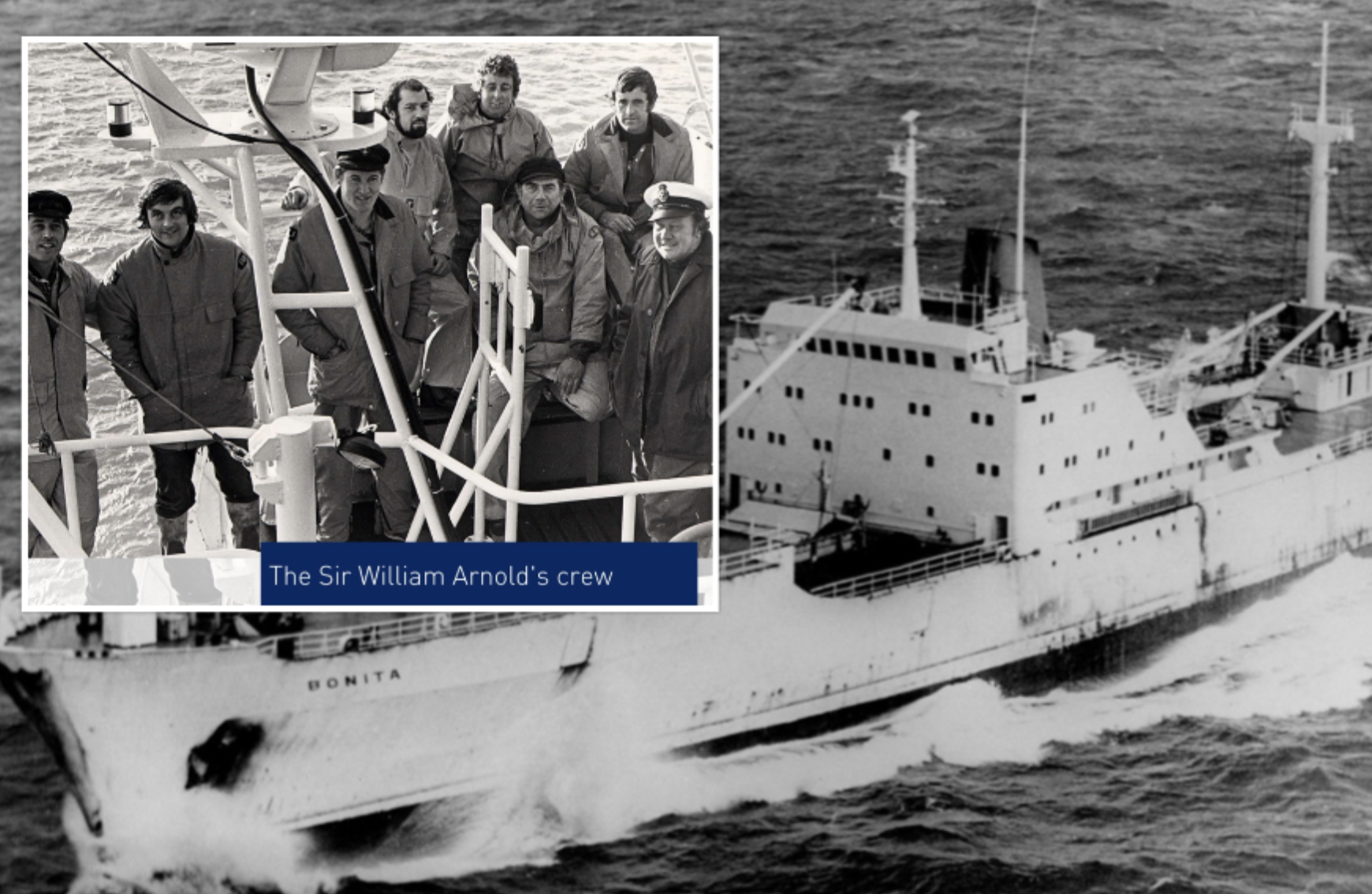
Pictured: Two men died during the Bonita rescue.
While attempting to reach the Sir William Arnold, a man let go of the line after jumping into the sea and had to be pulled aboard by the lifeboat crew. He had stopped breathing but was soon resuscitated by the crew.
Several rescue helicopters were now on scene, but the conditions were too challenging to safely rescue those onboard the Bonita. The Second Engineer, who had broken both his legs, could not make it to the lifeboat. After three attempts, a rescue helicopter managed to hover low enough to secure the injured man and airlift him to hospital.
Halfway through, they had 16 people on board the lifeboat, a serious injury and the crew were exhausted.
Eventually the master of the Bonita was rescued.
Although they had finally reached the safety of the lifeboat's wheelhouse, the survivors were not home and dry just yet. In total, the RNLI volunteers rescued 29 people, who were then taken to Torbay Lifeboat Station in Brixham. The lifeboat, her crew and all the casualties of the Bonita reached Devon at 11.13pm, after more than 10 hours at sea.
Sadly, two Bonita crew members were lost during the rescue. The first crew member's life was lost after he fell and hit the side of the ship during the rescue, killing him instantly. Tragically, the man who had suffered a head wound jumping onto the lifeboat later died in hospital due to his injuries.

In May 1982, the St Peter Port crew attended the RNLI's Annual Presentation of Awards. Coxswain Scales received a Gold medal for Gallantry while Second Coxswain Peter Nicholas, Mechanic Robert Vowles, and crew members Alan Martel, Peter Bisson, John Bougourd, Richard Hamon and John Webster all received a Bronze.
Six days after the Bonita rescue, on 19 December 1981, the Penlee lifeboat crew launched to a coaster, Union Star, which was battling hurricane winds. The crews of both vessels were all lost. It was the worst lifeboat tragedy in living memory.
At the awards, the St Peter Port crew took their RNLI ties and tied them in a big knot and presented them to the widows as a knot of friendship between the stations.
Comments
Comments on this story express the views of the commentator only, not Bailiwick Publishing. We are unable to guarantee the accuracy of any of those comments.